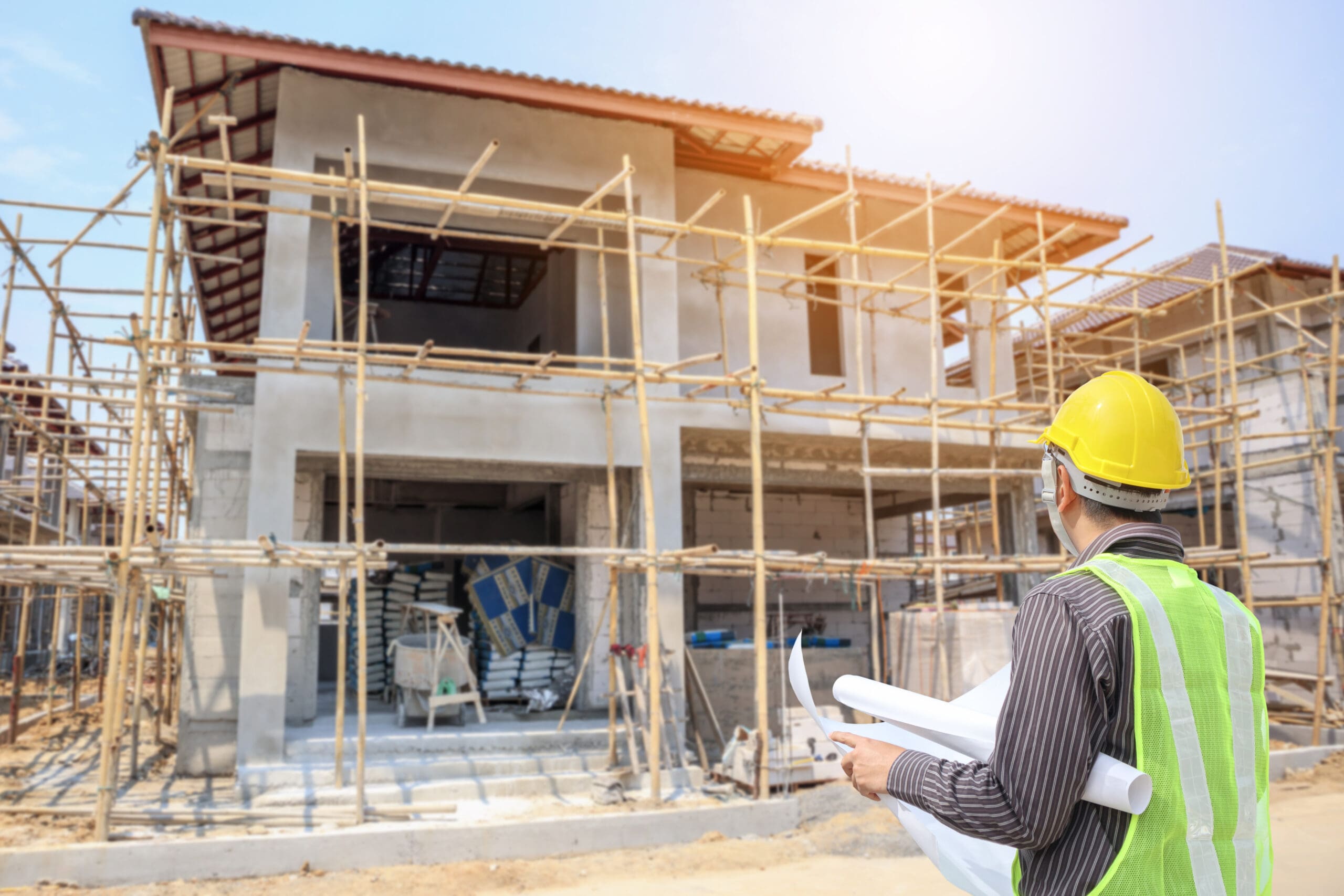Safeguarding Construction Projects with Surety Bonds
Imagine a construction project nearing completion, only abruptly halted due to the contractor’s financial collapse. The project remains unfinished, costs skyrocket, and the owner faces significant financial losses.
A report by Ernst & Young (EY) and the Surety & Fidelity Association of America (SFAA) found that unbonded construction projects with contractor defaults have an 85% higher completion cost than projects protected by surety bonds. This statistic underscores the critical role that surety bonds play in helping to safeguard construction projects and ensure their successful completion.
This guide will dive into the definition of construction surety bonds, exploring what they are, their purpose, and how they help provide financial security for project owners and contractors.
Understanding Surety
A surety bond in construction is a three-party agreement between a principal (the contractor), a surety (the insurance company), and an obligee (the project owner).
The surety guarantees the principal’s performance of their contractual obligations by acting as a financial guarantor to ensure the project is completed on time and according to budget. Surety bonds safeguard the obligee’s interests by providing a financial recourse if the contractor fails to fulfill their commitments.
It’s crucial to differentiate between surety bonds and insurance. While surety bonds are more specific to guaranteeing performance, insurance typically covers losses or damages.
When do I need a construction surety bond?
Surety bonds may be needed to fulfill contractual obligations, satisfy compliance requirements, and meet statutory requirements. A bond is also required when working on federal, state, and municipal construction contracts, with contract value thresholds being dictated by Miller and Little Miller Acts (i.e. $150,000+).
What is a surety?
A surety is the insurance company that provides the surety bond. They assess the contractor’s risk profile and determine whether to issue a bond and at what premium. The surety company acts as a financial intermediary, guaranteeing the contractor’s performance to the project owner.
Types of surety bonds
There are many types of bonds, but the four most typical surety bonds commonly used in the construction industry are:
- Bid Bonds: This bond is submitted along with a contractor’s bid and guarantees that if a contractor is awarded a project, they will enter into a contract. It ensures the project owner has a reliable contractor to complete the work.
- Performance Bonds: Guarantees that the contractor will perform as outlined in contract specifications including within budget and on time. It protects the project owner from potential delays or substandard work.
- Payment Bonds: Ensures that subcontractors and suppliers are properly paid for their services and materials. It protects the project owner from being held liable for unpaid bills.
- Warranty Bonds: Also known as maintenance bonds, warranty bonds guarantee that the contractor’s workmanship will be up to standard. It typically lasts a short period after the project’s completion, ranging from one to two years and is dictated by contract.
Why are Surety Bonds Important
There are several reasons surety bonds are important in construction projects:
- Risk mitigation: They help protect project owners from financial losses arising from contractor default or failure to meet contractual obligations.
- Legal and contractual requirements: Government contracts typically require surety bonds. Given the economic value of surety bonds, they are increasingly utilized on private construction projects.
- Trust and accountability: Surety bonds promote trust and accountability within the construction industry, helping ensure timely and precise project completion. A contractor’s ability to secure a bond also speaks to their quality and capability to successfully complete a given project.
What do Surety Bonds Cover?
Surety bonds typically cover the following:
- Financial losses: If a contractor defaults on their obligations, the surety may be required to cover the economic losses incurred by the project owner.
- Project completion: If a contractor fails to complete the project, the surety may arrange for another contractor to finish the work.
- Payment to subcontractors and suppliers: If a contractor fails to pay subcontractors or suppliers, the surety may be responsible for making these payments.
How a surety responds is determined by the specific bond form guaranteeing the contract. Based on this, it’s crucial to carefully review the specific terms and conditions of the bond to understand what situations are covered in the contract.
Factors Influencing the Cost of Construction Surety Bonds
Surety companies comprehensively evaluate contractors to determine their bond eligibility. This assessment of the contractor includes the following factors:
- Contractor’s financial health: The contractor’s financial stability and creditworthiness significantly impacts bond premiums. Contractors with a solid financial history and good credit typically qualify for lower premiums, as they are considered safer bets for surety underwriters.
- Contractor’s past performance: This review includes the contractor’s experience, skill level, and quality commitment. They watch out for delays, overspending, and legal issues. Contractors with a strong project performance history are more likely to be favored in the bonding process.
Other factors that are not focused on during contractor assessments include:
- Project complexity: The project’s size, scope, and complexity influence bond costs. Larger and more complex projects involve more significant risks and may require higher premiums.
- Risk assessment: The surety’s assessment of project risks, such as potential legal disputes or environmental hazards, also affects bond premiums. Projects with higher perceived risks may require higher premiums.
- Market conditions: The overall surety bond market conditions, including supply and demand, can influence pricing. In a competitive market with ample capacity, bond premiums may be lower, while premiums may be higher in a tight market with limited capacity.
Pros and Cons of Surety Bonds for Contractors
Surety bonds offer several advantages for contractors, including:
- Enhanced credibility and reputation: A contractor’s ability to post a bond for a given project speaks to a firm’s quality and reputation. Surety bonds demonstrate contractors’ financial stability and commitment to fulfilling their contractual obligations and is validated by a creditor, namely the surety.
- Competitive edge: Surety bonds are often a requirement for bidding on more extensive and complex projects. Possessing ample surety capacity allows a contractor to increase their project opportunities and secure lucrative contracts through their ability to bond new work.
However, surety bonds also come with some downsides:
- Potential financial liability: A bonded contractor may face financial liability if a bond claim is made against them. Due to the nature of the surety relationship, the contractor will be required to indemnify the surety for any losses incurred.
- Rigorous underwriting process: Obtaining surety bonds involves a stringent underwriting process that can be time-consuming. Contractors may need to provide extensive financial information and documentation to qualify for bonds which adds ongoing cost, such as accountant fees for CPA prepared financial statements.
Things to Look out for When Underwriting Bonds for Contractors
Underwriting bonds for contractors involve significant risks for surety companies.
- Financial strength: Surety bonds are ultimately a credit instrument. Based on this, sureties are keenly focused on the financial strength of the contractor. A poor project or series of unfortunate events can deplete a contractor of the necessary capital to complete work. This turn of events can happen quickly, leaving a surety with little ability to avoid a loss.
- Limited recovery: Unlike insurance, sureties only suffer a loss when a defaulted contractor is no longer able to indemnify the surety, so the ultimate risk for a surety is insolvency of the contractor. When a contractor files for bankruptcy, surety companies have difficulty recovering amounts owed. The bankruptcy process prioritizes creditors, and surety companies are almost always an unsecured creditor, which can significantly reduce any ability to recover their loss.
- Supply chain delays: Although lessening in number, supply chain disruption can be a severe risk to a contractor and, hence the surety supporting them. Delays can lead to late delivery of projects, which has a financial impact on the contractor through contractual damage assessment.
- Inflation and price escalation: In times of price volatility, contractors can bear the risk of increased costs on a project. Without contractual language protecting against price escalation, the increased cost can turn a good project bad which, depending on severity, can lead to financial distress of the contractor. These performance issues can ultimately lead to default and a surety claim.
- Over-extension of contractor: A surety carefully reviews current and historic data to determine a contractor’s capabilities and will provide surety support based on this analysis. There is always a risk that the contractor may not have the necessary project supervision or labor to successfully construct the job. This over-extension can lead to cost overruns or an inability to achieve schedule milestones or meet quality requirement triggering a default of the provisions within their construction contract.
- Expanding territory: Much like the over-extension of capabilities, there is increased risk in pursuing work in unfamiliar areas. Every area has nuances unique to the locale including knowledge of municipal and state laws, new owners and a different subcontractor and supplier base. These all equate to additional risk which can impact the performance of the contractor deciding to expand their territory.
Best Practices for Successful Project Performance
Implementing best practices could significantly improve the chances of successfully completing projects, effectively minimizing potential risk, and maximizing profits.
- Follow a disciplined go/no go process: Successful projects start with choosing the right job that fits a contractor’s unique skillset.
- Understand the terms in your contract: Familiarize yourself with all contract terms, including timelines, milestones, damage provisions, and payment terms. It’s important to only assume risks that you can control, mitigate or price. Be sure to issue timely notices to document any issues or problems in accordance with contractual terms.
- Document all changes: Document all changes to the project formally, outlining the scope, costs, and schedule impacts. This process will help safeguard your interests and ensure documentation for all additional expenses.
- Record project progress: Keep detailed records of project progress through daily logs and time-stamped photos. This documentation can be invaluable in supporting claims and resolving disputes.
- Maintain an updated financial record: Accurate financial records are crucial for demonstrating compliance with contract terms and supporting claims. Keep meticulous documentation of pay applications, purchase orders, invoices, receipts, proof of payment, and releases.
- Emphasize a culture of safety: Prioritize safety on your projects and document all safety efforts, including trainings, meetings, and incident reports. A strong safety record can help mitigate risks and improve your reputation.
- Create paper trails: Always leave a paper trail to document key communications and decisions. Paper trails will help protect your interests and provide evidence in disputes.
At the end of the day, success in construction equates to your ability to analyze, mitigate and price risk. By following these best practices, contractors could significantly increase their opportunity for success while being prepared for potential claims issues.
Choosing the Right Surety Partner
Surety bonds play a vital role in the construction industry allowing contractors to pursue bonded projects while providing financial security and ensuring the successful completion of project owners. By understanding the types of surety bonds, why they are required, and the underwriting process required to secure a bond, contractors and project owners can make informed decisions about their use.
Surety bonding can be a complicated process but our construction experts simplify surety bonding and risk management strategies so you can focus on delivering projects safely and profitably.
For more information
We’re ready to help when you are. Get in touch and one of our experienced Baldwin advisors will reach out to have a conversation about your business or individual needs and goals, then make a plan to map your path to the possible.
This document is intended for general information purposes only and should not be construed as advice or opinions on any specific facts or circumstances. The content of this document is made available on an “as is” basis, without warranty of any kind. The Baldwin Insurance Group Holdings, LLC (“The Baldwin Group”), its affiliates, and subsidiaries do not guarantee that this information is, or can be relied on for, compliance with any law or regulation, assurance against preventable losses, or freedom from legal liability. This publication is not intended to be legal, underwriting, or any other type of professional advice. The Baldwin Group does not guarantee any particular outcome and makes no commitment to update any information herein or remove any items that are no longer accurate or complete. Furthermore, The Baldwin Group does not assume any liability to any person or organization for loss or damage caused by or resulting from any reliance placed on that content. Persons requiring advice should always consult an independent adviser.






